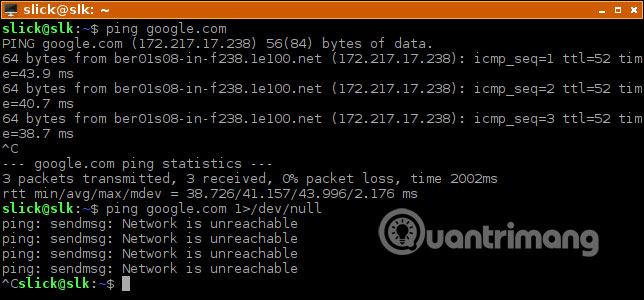Redirect Stderr To Dev Null C
Q. How do I redirect stderr to stdout? How do I redirect stderr to a file?
A. Bash and other modern shell provides I/O redirection facility. There are 3 default standard files (standard streams) open:
[a] stdin – Use to get input (keyboard) i.e. data going into a program.
@cnicutar It seemed I have a wrong understanding in the start. I supposed 2&1 will redirect stderr to stdout and the 1/dev/null will then redirect both them into /dev/null. Well I need to relearn some shell. – Shou Ya Aug 19 '12 at 14:26. Stack Exchange network consists of 175 Q&A communities including Stack Overflow, the largest, most trusted online community for developers to learn, share their knowledge, and build their careers. Jan 04, 2003 I wonder if this is the right way to redirect stdout, stderr and stdin to /dev/null: SNIP This won't work, all you're doing is redirecting the stdio handles for stdout/err/in, not closing the actually file descriptors. When I examine such program with lsof I can see: redir 25055 trip 0r CHR 1,3 66788 /dev/null. Mar 12, 2008 Actually it means “first redirect STDERR to STDOUT, so any errors printed out on STDERR should go to STDOUT. Then, execute ‘command’ and redirect its STDOUT to ‘file-name'” – keeping in mind that at this point STDOUT will also contain whatever is written to STDERR.
[b] stdout – Use to write information (screen)
- I wonder if this is the right way to redirect stdout, stderr and stdin to /dev/null: SNIP This won't work, all you're doing is redirecting the stdio handles for stdout/err/in, not closing the actually file descriptors. When I examine such program with lsof I can see: redir 25055 trip 0r CHR 1,3 66788 /dev/null.
- The general form of this one is M/dev/null, where 'M' is a file descriptor number. This will redirect the file descriptor, 'M', to /dev/null. 2&1 The general form of this one is M&N, where 'M' &.
- Redirect stderr and/or stdout to /dev/null from command line Is it possible to redirect errors at the command line when you run the script such as bash scriptname & 2/dev/null?
[c] stderr – Use to write error message (screen)
Understanding I/O streams numbers
The Unix / Linux standard I/O streams with numbers:
| Handle | Name | Description |
| 0 | stdin | Standard input |
| 1 | stdout | Standard output |
| 2 | stderr | Standard error |
Redirecting the standard error stream to a file

The following will redirect program error message to a file called error.log:$ program-name 2> error.log
$ command1 2> error.log
Redirecting the standard error (stderr) and stdout to file
Use the following syntax:$ command-name &>file
OR$ command > file-name 2>&1
Another useful example:# find /usr/home -name .profile 2>&1 more
Redirect stderr to stdout
Use the command as follows:$ command-name 2>&1
ADVERTISEMENTS
Aalto vst crack.
Csh Stderr To Dev/null
How do I redirect output and errors to /dev/null under bash / sh shell scripting? How do I redirect the output of stderr to stdout, and then redirect this combined output to /dev/null device? In Unix, how do I redirect error messages to /dev/null?You can send output to /dev/null, by using command >/dev/null syntax. However, this will not work when command will use the standard error (FD # 2). [donotprint][/donotprint]So you need to modify >/dev/null as follows to redirect both output and errors to /dev/null.
Cron Redirect Stderr And Stdout To Dev Null
Syntax to redirect error and output messages to /dev/null
The syntax discussed below works with Bourne-like shells, such as sh, ksh, and bash:
OR
You can also use the same syntax for all your cronjobs to avoid emails and output / error messages:@hourly /scripts/backup/nas.backup >/dev/null 2>&1
OR@hourly /scripts/backup/nas.backup &>/dev/null
Redirect both standard error and standard out messages to a log file
Stdout And Stderr To File
You can always redirect both standard error (stdin) and standard out (stdout) text to an output file or a log file by typing the following command:
Want to close stdout and stderr for the command being executed on a Linux/Unix/BSD/OSX bash shell?
Try the following syntax:
See man pages: ksh(1)
Unix Redirect Error To Null
ADVERTISEMENTS